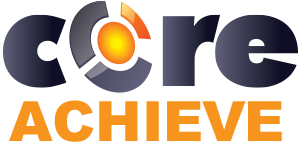Unraveling the Surprising Impact of an LMS on an Organization’s Carbon-Footprint
August, 22 2023
Other posts:
Enhancing Team Dynamics for Effective Group Decision-Making with LMS Integration
Organizations increasingly rely on collaborative efforts to solve complex problems, innovate, and adapt to change, but how do we ensure that collaboration is happening.
Maximizing Small Business Potential with Training Technology
Training technologies can push small businesses ahead of their competitors, but what are the factors that go into choosing the right technology?
Unlocking Employee Potential: The Transformative Benefits of an Interactive Learning Management System (LMS)
Interactive training allows for unlocking employee potential, but how is it done?
Building a Robust Sales Pipeline with Training
Every organization wants a streamlined sales pipeline, but building one requires a series of interlocking activities with one of the most important being training.
Strategies for Adapting In-Person Training to Online Platforms
Online training is one of the most flexible ways of delivering training across organizations, but how do you even begin to adapt in-person training into online?
Traditional training comes with a lot of energy cost—both from people and fuel—surprising, an LMS can help cut down on these costs
One often overlooked area where sustainability can make a significant impact is—understandably—eLearning, specifically through Learning Management Systems (LMS). An LMS not only cuts down on your organization’s environmental impact, but it can also save your organization resources. To fully grasp how an LMS can do this, we must first look at the impact of traditional learning.
The Carbon Footprint of Traditional Learning
Traditional learning methods, such as in-person training and classroom-based education, have long been associated with a substantial carbon footprint. These methods often involve significant travel, paper-based materials, and the consumption of energy for facilities.
Travel Emissions
Instructors and learners frequently commute to physical training locations, resulting in a substantial carbon footprint. This includes emissions from vehicles, air travel, and even accommodations for remote training sessions.
Printed Materials
Many traditional training programs rely heavily on printed materials, from textbooks to handouts. The production of paper and its distribution contribute to deforestation and greenhouse gas emissions.
Energy Consumption
Physical training facilities require heating, cooling, and lighting, contributing to energy consumption and emissions. This is especially true for larger organizations with numerous training locations.
The Green Advantages of LMS-Based Learning
LMS-based learning offers a sustainable alternative to traditional methods by minimizing or eliminating many of the carbon-intensive practices associated with them. The following list shows how organizations can cut down on energy costs.
1. Virtual Learning Environments
One of the most significant environmental benefits of LMS is the reduction of travel-related emissions. With eLearning, learners can access training materials and courses from anywhere with an internet connection. Naturally, this limits the need for learners to commute to and from locations just for training, cutting down on energy use while making life easier for the learners.
2. Digital Course Materials
Instead of relying on printed materials, LMS allows you to create and distribute digital content. eBooks, PDFs, videos, and interactive modules can replace physical handouts and textbooks, reducing paper consumption and minimizing waste.
3. Energy Efficiency
LMS-based learning requires minimal energy compared to maintaining physical training facilities. Hosting your LMS on energy-efficient servers and taking advantage of cloud-based solutions can further reduce your organization's carbon footprint.
4. Reduced Resource Consumption
LMS allows you to track learner progress and performance digitally. This means fewer physical exams, fewer answer sheets, and less administrative work. Your organization can significantly reduce its consumption of resources like paper and ink.
5. Long-Term Cost Savings
Implementing eco-friendly learning practices with your LMS can lead to long-term cost savings. Reduced travel expenses, lower paper and printing costs, and energy efficiency improvements can all contribute to a healthier bottom line.
All these environmental benefits are far-flung—we won’t see any immediate change by implementing them—however, using an LMS platform makes the learner process much easier for both trainers and learners. By leveraging virtual learning environments, digital course materials, energy-efficient solutions, and sustainable practices, you can significantly reduce your energy consumption while improving the accessibility and convenience of training for your learners.
Get started with CoreAchieve today for free.
Photo by Derek Oyen on Unsplash

Leave comment: